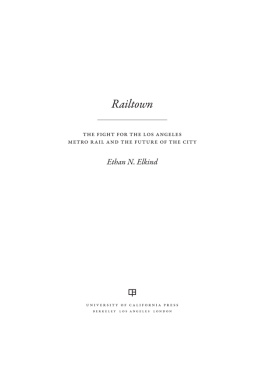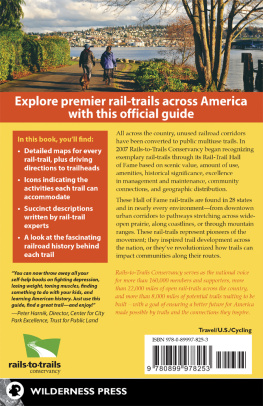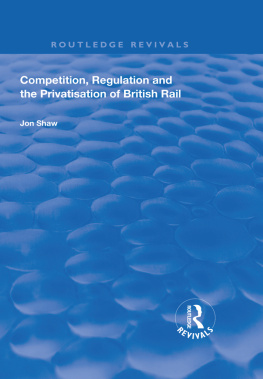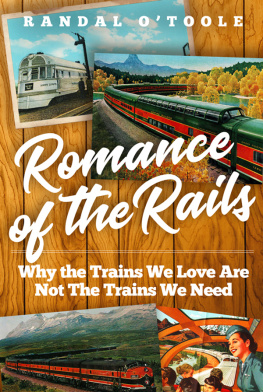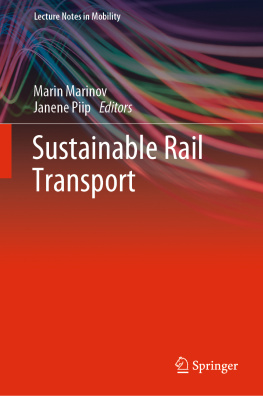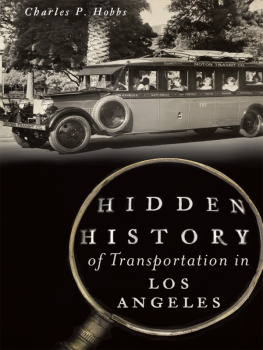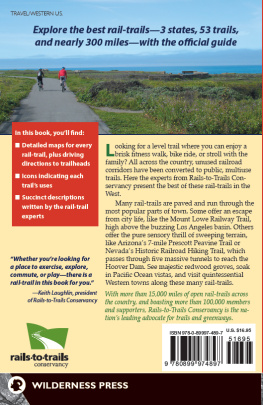
Railtown
The publisher gratefully acknowledges the generous support of the Lisa See Endowment Fund in Southern California History and Culture of the University of California Press Foundation.
Railtown
THE FIGHT FOR THE LOS ANGELES
METRO RAIL AND THE FUTURE OF THE CITY
Ethan N. Elkind

UNIVERSITY OF CALIFORNIA PRESS
BERKELEYLOS ANGELESLONDON
University of California Press, one of the most distinguished university presses in the United States, enriches lives around the world by advancing scholarship in the humanities, social sciences, and natural sciences. Its activities are supported by the UC Press Foundation and by philanthropic contributions from individuals and institutions. For more information, visit www.ucpress.edu.
University of California Press
Berkeley and Los Angeles, California
University of California Press, Ltd.
London, England
2014 by Ethan N. Elkind
Library of Congress Cataloging-in-Publication Data
Elkind, Ethan N., 1976.
Railtown : the fight for the Los Angeles Metro Rail and the future of the city / Ethan N. Elkind.
p.cm.
Includes bibliographical references and index.
ISBN 978-0-520-27826-4 (cloth : alk. paper)
ISBN 978-0-520-27827-1 (pbk. : alk. paper)
eISBN 978-0-520-95720-6
1. Local transitCaliforniaLos Angeles.2. Urban transportationCaliforniaLos Angeles.I. Title.
HE4491.L75E452014
388.4 20979494dc232013017251
Manufactured in the United States of America
23 22 21 20 19 18 17 16 15 14
10 9 8 7 6 5 4 3 2 1
In keeping with a commitment to support environmentally responsible and sustainable printing practices, UC Press has printed this book on Natures Natural, a fiber that contains 30% post-consumer waste and meets the minimum requirements of ANSI/NISO Z 39.48-1992 ( R 1997) ( Permanence of Paper ).
In memory of my grandfather, Milton N. Nathanson, who rode the Santa Monica Boulevard bus to work every day, and my grandmother, Maria P. Nathanson.
CONTENTS
ILLUSTRATIONS
ACKNOWLEDGMENTS
This book began in the fall of 2004 when, as a second-year law student at UCLA School of Law, I enrolled in a seminar on California legal history. The instructor was professor and former law school dean Susan Westerberg Prager, who designed the course with the somewhat unusual belief that lawyers are well trained to be historians, given their research and writing skills. With Professor Pragers indispensable encouragement, I decided to expand my seminar paper on Los Angeles transit history into this book.
Sean Hecht, executive director of the UCLA Environmental Law Center, provided crucial support for the effort. As a mentor, friend, and selfless advocate for students like me, Sean helped me secure a research grant, committed some of his centers funds, and provided feedback on drafts.
The John Randolph Haynes and Dora Haynes Foundation awarded the grant funds that enabled me to spend part of a year researching, writing, and traveling to archives and interviews. I thank Bill Burke and the foundation board members for their commitment to this story and to supporting social science research.
For the original seminar paper, I had the good fortune to interview former Los Angeles County supervisor Ed Edelman. He was generous with his time, opinions, and referrals, most notably to his chief deputy Bob Geoghegan, who helped bring the story to life through his anecdotes and insights. Residents of Los Angeles are lucky to have had both Bob and Supervisor Edelman as public servants. I was also fortunate to conduct interviews with numerous individuals who were involved in the story as it happened (they are listed in the bibliography). Their expertise and recollections filled important gaps in the history. I hope this story does justice to their efforts.
Various library and archive staff members helped me find source material in sometimes unlikely places. They include UCLA library archivist Chuck Wilson, Jenny Lentz at the UCLA Law Library, and Jeffery Rankin and the superb staff at the UCLA Special Collections Department. Thanks to Supervisor Edelman, I had access to his and Supervisor Kenneth Hahns papers at the Huntington Library. David Pfeiffer at the National Archives and Records Administration in College Park, Maryland, single-handedly rescued my research trip to that archive by locating key federal papers. Los Angeles Metropolitan Transportation Authority librarian Mathew Barrett regularly provided resources and referrals, while Metros Denise Villegas, Gayle Anderson, and Michael Lejeune located most of the photos and maps used in the book. In addition, various local transit leaders and experts helped me find material, including Steve Hymon, Gloria Ohland, Martin Wachs, Brian Taylor, Anastasia Loukaitou-Sideris, Ken Alpern, Bart Reed, and Damien Newton.
Many dedicated and smart colleagues in environmental law and policy influenced my thinking on the land use and transportation issues discussed in the book, including Ken Alex, Richard Frank, Terry Watt, Cliff Rechtschaffen, Cara Horowitz, Jonathan Zasloff, Meea Kang, David Mogavero, Geof Syphers, Curt Johansen, Kirstie Moore, and Chris Calfee. Historian Zachary Schrag gave me useful advice about book structure and approach. I also thank my colleagues, past and present, at the Center for Law, Energy and the Environment at Berkeley Law, including Dan Farber, Holly Doremus, Steve Weissman, Mike Kiparsky, Deborah Lambe, Jayni Foley Hein, and Caroline Cheng.
At UC Press, Kim Robinson offered thoughtful input and guidance; Stacy Eisenstark, Jessica Moll, and Elena McAnespie helped with production; and Anne Canright undertook diligent and careful review of the text. Two anonymous reviewers provided comments that sharpened my research and arguments.
Friends along the way made the work easier, particularly Dana and Beverly Palmer, Peter and Amber Schumacher, Peter and Kiersten Kampp, Mark and Shannon Lo, Joshua Dylan Mellars, Kenji Nimura, and Trevor and Kari Shelton, as well as my UCLA Law classmates and instructors. Family friends Stephen and Frances Tobriner and Marjorie and Ted Keeler provided helpful advice also.
I am thankful every day for my family, especially my parents, Peter and Sue Elkind. Their unwavering faith, support, and love made this bookand my career choicespossible. My in-laws Hank and Darlene Breiteneicher, Chris and Laura Lay, and Adam and Arianne Breiteneicher adopted me into their clan and have shown love and loyalty ever since. The Pankins (Stuart, Joy, Andy, and Shannon) provided steady nourishment and love during our time in Los Angeles.
Finally, mere words do not seem sufficient to acknowledge and thank my wife, Jessica. She supported me during many untold hours of work on the book, discussing key points, reviewing drafts, and offering welcome advice, all while ably balancing the responsibilities of family and a career as a historian. And to my three children, Caleb, Maya, and Sadie: I hope this book contributes in some way to improving the world that you and your generation inherit.
ABBREVIATIONS
| BART | Bay Area Rapid Transit |
| BRT | Bus Rapid Transit |
| BRU | Bus Riders Union |
| Cal/OSHA | California Division of Occupational Safety and Health |
| Caltrans | California Department of Transportation |
| CEQA | California Environmental Quality Act |
| DOT | U.S. Department of Transportation |
| EIR/EIS | |

